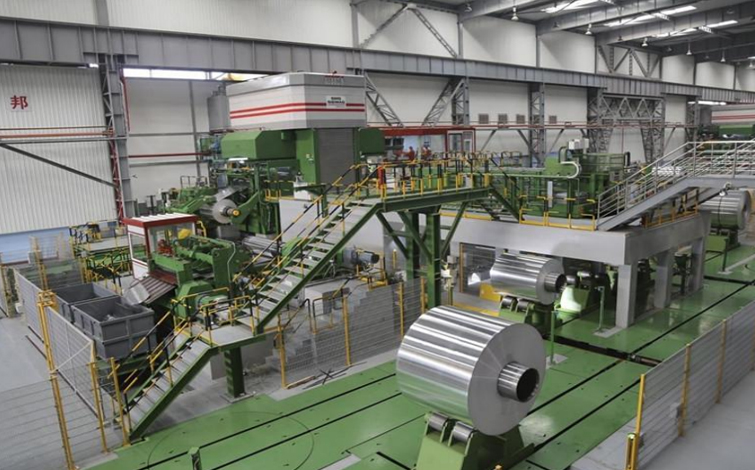


Judging from the position data after the close on Monday, the main forces of the long and short sides are still in a stalemate, and neither side has seen a large-scale lightening. Let's take a look at the main logic of both long and short sides.
1. Low inventory continues to support aluminum prices
For the bulls, the biggest bull for fundamentals is the declining social inventory. On November 21, SMM counted 530,000 tons of domestic electrolytic aluminum social inventory, a decrease of 17,000 tons from last Thursday, a monthly decrease of 82,000 tons, and a decrease of 497,000 tons from the same period last year. The inventory of electrolytic aluminum ingots has continuously hit new lows, and has now dropped to 530,000 tons, which is at a new low level in the same period of the previous year and in 2022. From the perspective of different regions, Wuxi region ranks first in the reduction of inventory, mainly due to the problem of less arrivals. According to market understanding, after the delivery of goods in Gongyi region resumes, the arrivals in Wuxi will be diverted, so the inventory is still in a downward trend. In terms of shipments, the shipments in Wuxi remained at about 45,000 tons per week, and the week-on-week decline, but still at an average level; the inventory in Gongyi increased slightly by 1,000 tons compared with last Thursday, maintaining around 62,000 tons. However, in the later period, some in-transit sources of goods in Gongyi area arrived, and attention was paid to the changes in inventory after arrival; in Foshan area, aluminum rods began to arrive one after another, but the inventory of aluminum ingots remained low, down 6,000 tons from last Thursday.
On the whole, although some areas in the northwest have lifted the blockade control and the transportation has gradually resumed, aluminum ingots and aluminum rods will be expected to arrive in a concentrated manner. strong support.
2. The slow recovery of demand drags down aluminum prices
For bears, the performance of the demand side has been an important factor dragging down aluminum prices this year. Whether it is macroeconomic data or microscopic operating rate of downstream enterprises, the overall performance is not ideal. In particular, the real estate is in a downward cycle, and the interference of periodic epidemic factors is a very obvious drag on the downstream consumption of aluminum. According to SMM survey data, as of November 17, the operating rate of domestic aluminum downstream processing leading enterprises was 67.1%. In terms of sub-sections, the operating rate of the aluminum foil sector fell slightly this week, mainly due to the entry of the traditional consumption off-season, weak market demand, and decline in corporate output. The operating rate of the rest of the sectors remained stable this week. Recently, the price of aluminum has been relatively strong. The enthusiasm of the downstream of the aluminum sheet and strip is relatively high, while the downstream of the aluminum cable and aluminum profile sector has a strong wait-and-see mood. Insufficient demand for primary and secondary alloys continued to restrict the increase in operating rates of enterprises, and the short-term operating rate was stable and weakened.
3. What are the influencing variables of the market outlook?
Breaking the current impasse will require new external forces. Judging from the fundamentals of Shanghai Aluminum, the market outlook factors that bulls are looking forward to are the reduction of production on the supply side and the rise in production costs. The supply side has seen production reductions in Sichuan and Yunnan due to insufficient hydropower and losses in Henan this year. Possible production reduction factors include production reductions by electrolytic aluminum companies due to policies such as the heating season, production reductions due to emergencies, and so on. According to SMM statistics, as of the beginning of November, SMM's domestic electrolytic aluminum production capacity reached 45.16 million tons, domestic electrolytic aluminum operating capacity was 40.34 million tons, and the national electrolytic aluminum operating rate was about 89.4%. In the short term, the probability of large-scale production reduction is not large. The other is the change in the cost side. At present, the mainstream alumina producing areas in China have various degrees of loss. With the arrival of the northern heating season, alumina enterprises are under great pressure to reduce production. Once the scale of production reduction is large, alumina prices may stop falling. rebound, thereby raising the cost of electrolytic aluminum.
The market outlook factors that the bears are looking forward to are the accumulation of more-than-expected inventories and the decline in production costs. As mentioned in the previous analysis, due to the influence of logistics and transportation factors, the expectation of social inventory accumulation of electrolytic aluminum has not been realized. In addition, the coal price in the production cost of electrolytic aluminum has been relatively strong. If the coal price falls more than expected, it will drag down the cost of electrolytic aluminum, similar to the simultaneous decline in the prices of the two in the fourth quarter of last year.
On the whole, in addition to the fundamental factors analyzed above, the impact of macro aspects cannot be ignored. Especially in December, the domestic economic work conference will be held to lay out the economic work for next year. The market is generally optimistic about the domestic economic growth next year. The foreign Federal Reserve will raise interest rates for the last time this year, and the market generally expects that the pace of interest rate hikes will slow down.



